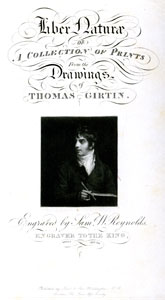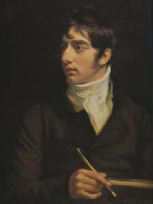Since Adirondack Retro acquired Darvill's Rare Prints in August of 2022, we have been working tirelessly on our New State-Of-The Art Website. We are excited to announce that it is now up and running and that our massive inventory of Antique Prints and Rare Maps are being transferred over to the new site daily. In addition to the nearly 500,000 prints found on www.DarvillsRarePrints.com, Adirondack Retro offers an eclectic selection of Antique and Vintage Advertisements along with their Limited Edition Giclee Prints. During this transition, customers will still be able to shop and make purchases on www.DarvillsRarePrints.com. Sign up for our Mailing List and receive our Adirondack Retro Newsletter. When you sign up, we will email you a coupon code for you to get 15% OFF your first order at AdirondackRetro.com. |
Liber Naturae
(1883)
Original 140+-year-old Mezzotint engravings by Sam W. Reynolds
after Thomas Girtin's drawings.
Very Rare – the edition was limited to 200 copies!
The mezzotints were all engraved about 1823-24 and were published 60 years later in an edition of 200 copies – 100 artist's proofs on India Paper and 100 proofs on Plate Paper.
Below are prints from the edition on Plate Paper.
The engraved plates were then destroyed.
Sheet size: approximately 20 x 13¼ inches
(note: some plates may have light foxing, click thumbnails for enlarged view)
 |
Thomas Girtin (1775-1802) has been credited as one of the founders of English watercolor painting. Raised by his draftsman stepfather, Girtin was apprenticed from 1788 to 1794 to the envious and authoritarian topographical artist Edward Dayes (1763-1804). He made finished paintings from the pencil sketches of other artists or talented amateurs such as John Henderson or James Moore. In 1794 Girtin made a sketching tour of the English Midlands with Moore, exhibited his first painting at the Royal Academy, and began his visits to Dr. Munro's "academy" (a practice he continued until 1797). Sketches made during his tour of Yorkshire and the Scottish border in 1796 became panoramic and picturesque watercolors that launched his career. In 1799 he was a founding member of the Sketching Society, formed to promote the development of historical painting (considered the highest form of painting by academic art theorists); artists in London met in the evening to improvise and then critique monochrome illustrations based on a literary excerpt chosen by the host. Girtin made several more sketching trips throughout England, was active as a drawing master, and took up oil painting in 1800. In 1801 he completed a 360 degree panoramic oil painting of London, the Eidometropolis, apparently intended as a money making venture. He had just finished the soft ground etchings for his Twenty Views of Paris, made during a year long trip to France in 1801-02, when he died in London of asthma at age 27. |
 |

untitled
(ref. plate #5)
(pencil writing in margin, easily erased)
$175

untitled
(ref. plate #6)
(sheet has been trimmed, still generous margins)

Click here to return to Topographical Scenes







